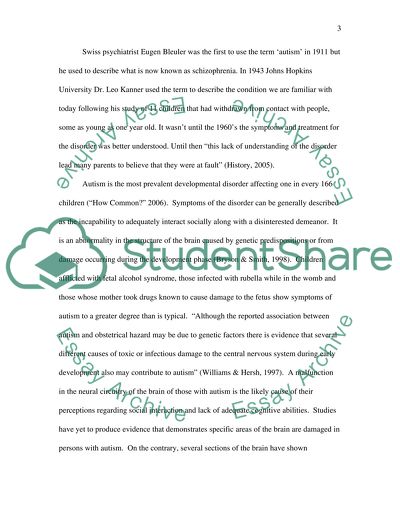Cite this document
(“Autism Essay Example | Topics and Well Written Essays - 1750 words”, n.d.)
Retrieved from https://studentshare.org/psychology/1560282-autism
Retrieved from https://studentshare.org/psychology/1560282-autism
(Autism Essay Example | Topics and Well Written Essays - 1750 Words)
https://studentshare.org/psychology/1560282-autism.
https://studentshare.org/psychology/1560282-autism.
“Autism Essay Example | Topics and Well Written Essays - 1750 Words”, n.d. https://studentshare.org/psychology/1560282-autism.


